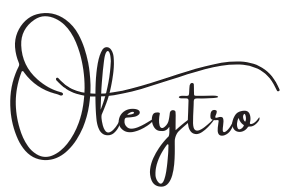What Are Active Learning Tools?
Active Learning is a method in machine learning that ensures training data is used more effectively. This approach identifies the data points where the model is least confident or most uncertain and prioritizes them for labeling. By doing so, it maximizes learning with minimal effort.
Active Learning tools aim to reduce the cost of manual labeling in large datasets while improving model accuracy. These tools automate or simplify processes such as labeling, data analysis, data cleaning, and improving model performance. Below, we review and compare some of the most popular Active Learning software available.
1. Amazon Augmented AI (A2I)
Features:
Amazon A2I simplifies the integration of human validation into machine learning models, making it ideal for tasks requiring manual review of sensitive or ambiguous predictions.
Pros:
- Seamless integration with AWS infrastructure.
- Automated workflow creation.
- Robust security features.
Cons: - Dependency on the AWS ecosystem.
- May be costly for small teams.
2. Aquarium
Features:
Aquarium focuses on data quality to enhance model performance. It identifies the data points where the model performs poorly and presents them to the user.
Pros:
- Strong emphasis on data quality.
- User-friendly interface.
- Quickly identifies model weaknesses.
Cons: - Limited customization options.
- Slower performance with large datasets.
3. Deepchecks
Features:
Deepchecks is a powerful tool for verifying model accuracy and dataset consistency. It identifies discrepancies between training data and prediction outcomes.
Pros:
- Comprehensive tests for data and model validation.
- Quick setup and ease of use.
Cons: - Limited performance with very large datasets.
4. Encord
Features:
Encord accelerates the labeling process for video and image data by offering automatic labeling, collaboration tools, and analytics.
Pros:
- Specialized tools for video data.
- Automatic labeling support.
Cons: - Limited support for non-image data types.
5. V7
Features:
V7 optimizes data preparation and labeling processes for AI projects. It’s particularly popular in fields like medical imaging and autonomous vehicles.
Pros:
- Automatic labeling and Active Learning capabilities.
- User-friendly interface.
Cons: - High cost for small teams.
6. Dataloop
Features:
Dataloop offers data annotation, collaboration, and Active Learning features in a single platform, providing end-to-end data management.
Pros:
- Flexible integration options.
- Advanced labeling tools.
Cons: - Steeper learning curve.
7. Galileo
Features:
Galileo focuses on improving labeling processes to create high-quality data. It excels in data cleaning and analysis.
Pros:
- Strong focus on data quality.
- Quickly detects ambiguous data points.
Cons: - Complex interface for beginners.
8. Labelbox
Features:
Labelbox simplifies data labeling and management processes. It supports a variety of data types, including images, videos, and text.
Pros:
- Broad support for different data types.
- Collaboration-enhancing tools.
Cons: - Limited customization options.
9. Lightly
Features:
Lightly optimizes data selection and labeling processes, making it ideal for teams working with image data.
Pros:
- Effective Active Learning tools for image data.
- Easy to use.
Cons: - Limited performance for non-image data types.
10. Voxel51
Features:
Voxel51 provides labeling and analysis tools for video data, making it a popular choice for video-centric projects.
Pros:
- Powerful tools for video analytics.
- Advanced visualization options.
Cons: - High hardware requirements.
11. Cleanlab
Features:
Cleanlab is designed to identify and correct mislabeled data, improving model accuracy.
Pros:
- Expert at detecting mislabeled data.
- Automates data cleaning processes.
Cons: - Requires technical expertise.
12. iMerit Ango Hub Multimodal AI Platform
Features:
iMerit’s platform supports labeling, data cleaning, and analysis, excelling with multimodal data types.
Pros:
- Versatile data support.
- Expert-assisted labeling.
Cons: - High cost for smaller projects.
13. Propeller
Features:
Propeller supports large-scale data analysis and Active Learning processes.
Pros:
- Comprehensive tools for data analysis.
- Customization options.
Cons: - Steeper learning curve.
Which Tool Should You Choose?
Each software has its strengths and weaknesses, which vary depending on your use case. Amazon Augmented AI offers extensive integration options, while Aquarium focuses on data quality. For those working with image data, Encord and V7 are excellent choices, while Voxel51 is best for video projects. If you’re new to Active Learning, tools like Labelbox or Dataloop provide a smoother learning experience.
When choosing a tool, consider your project requirements, budget, and team expertise to ensure the best fit.
